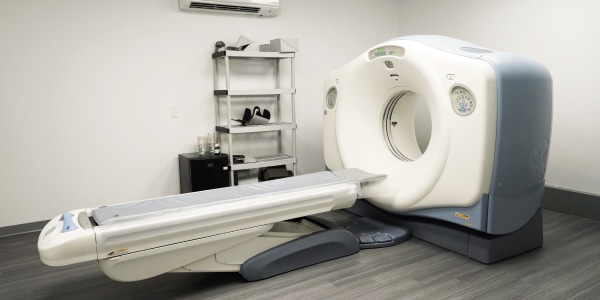Low-Dose Computed Tomography (LDCT)
Experience Precise Diagnostic Imaging with Low-dose Computed Tomography (LDCT). Our Low-dose CT Scan has accurate results and minimal radiation exposure.
Particularly, most people go to a doctor when they get hurt or injured. Similarly, to find out what is wrong and how to treat it. Because of this sometimes the doctor can diagnose the issue through the symptoms alone. However, in many cases, they will use diagnostic imaging such as a Low-dose CT scan to confirm or investigate further.
Since there are different types of diagnostic imaging tests. But one of the most effective imaging procedures is Low-dose Computed Tomography (LDCT). Consequently, that helps doctors investigate possible causes for symptoms through a CT scan.
Historically, healthcare providers restricted the use of CT scans to only select circumstances due to the high dose of radiation emitted. Evidently, advancements in technology have delivered a newer low-radiation CT scan. Briefly, the low-dose computed tomography technology splits the full X-ray beam into smaller thinner beams. As a result, it can deliver high-quality image results but at a much-reduced radiation dose.
What is a Low-Dose CT Scan?
To sum up, doctors use the low-dose CT scan or computed tomography scan as a noninvasive test for medical purposes. Moreover, that uses a combination of specialized X-ray equipment that works with a computer to display images of the inside of the body. Furthermore, a low-dose CT scan works the same way. But the newer technology performs the same task without the use of as much radiation exposure.

How do Doctors Perform the Scan?
At times, for a low-dose CT scan, doctors use a contrast material (a special dye) to highlight the areas in question. Later that will show up white on the resulting images. Additionally, doctors can administer this special contrast material by IV or by mouth to examine details such as blood vessels and intestines.
Therefore, a medical technician positions the patient on a table attached to the CT machine for a low-dose CT scan, placing them on their back, side, or stomach depending on the area to be examined.
Then, a medical technician will move the table slowly through the CT machine as they perform the scan. During the low-dose CT scan, X-ray beams are sent throughout the body. Thus, it forms pictures of bones and soft tissue areas providing detailed pictures that provide insight to doctors for diagnosis purposes. Nevertheless, the radiologist can move these images around to view different areas and the images can also be printed.
What can a CT Scan Diagnose?
Above all, CT Scans are used to diagnose injuries after an accident or to investigate issues with the lungs or chest, tumors, and ovarian cysts. Much like women are screened for breast cancer, low-dose CT scans can also be used to screen for early detection of problems such as lung or colon cancer and more.
However, early detection of lung cancer using a low-dose CT scan can lower mortality rates for high-risk patients. In the final analysis, it is recommended that if you smoke or have smoked and are 50+ you should be screened.
Which Body Parts and Organs can we Visualize?
Low-dose CT scan visualizes the following body parts:
- Abdomen.
- Pelvis.
- Chest.
- Extremities.
Low-dose CT scan visualizes the following body organs:
- Bladder.
- Pancreas.
- Adrenal Glands.
- Liver.
- Sinuses.
- Blood Vessels.
- Heart.
- Intestines.
- Spinal Cord.
- Brain.
- Lungs.
- Kidneys.
Why might I need a CT Scan?
Albeit, a low-dose CT scan is a helpful diagnostic tool to find the root cause of unexplained or chronic pain. In summary, the CT scan can check for blood vessel issues and blockages that can cause serious and even life-threatening events.
In conclusion, you might consider a low-dose CT scan for early detection of lung cancer, colon cancer, headaches, chest pain, abdominal or pelvic pain, chronic hip pain, and more.
How much does a Low-Dose CT Scan Cost?
The cost of the low-dose CT scan will vary based on the patient, the type of screening done, and whether contrast is used. Comparably, most self-pay LDCT scans start at around $350 without contrast and $400 with contrast.
Nonetheless, contact the IBI specialized radiologists to learn more about low-dose CT scans. Finally, this painless diagnostic process can help you. Lastly, set up an in-office (personal) appointment or a teleconsultation (online) today.





